Marcel Proust (1871-1922): Art in Swann's Way, Part 1: Combray
Swann's Way, Part 1: Combray

A magic lantern with slides and equipment, ca. 1890.
Image source: Wikimedia Commons. The object in this image is within the permanent collection of The Children's Museum of Indianapolis. License: CC-BY-SA 3.0.
"Some one had had the happy idea of giving me, to distract me on evenings when I seemed abnormally wretched, a magic lantern, which used to be set on top of my lamp while we waited for dinner-time to come ... "
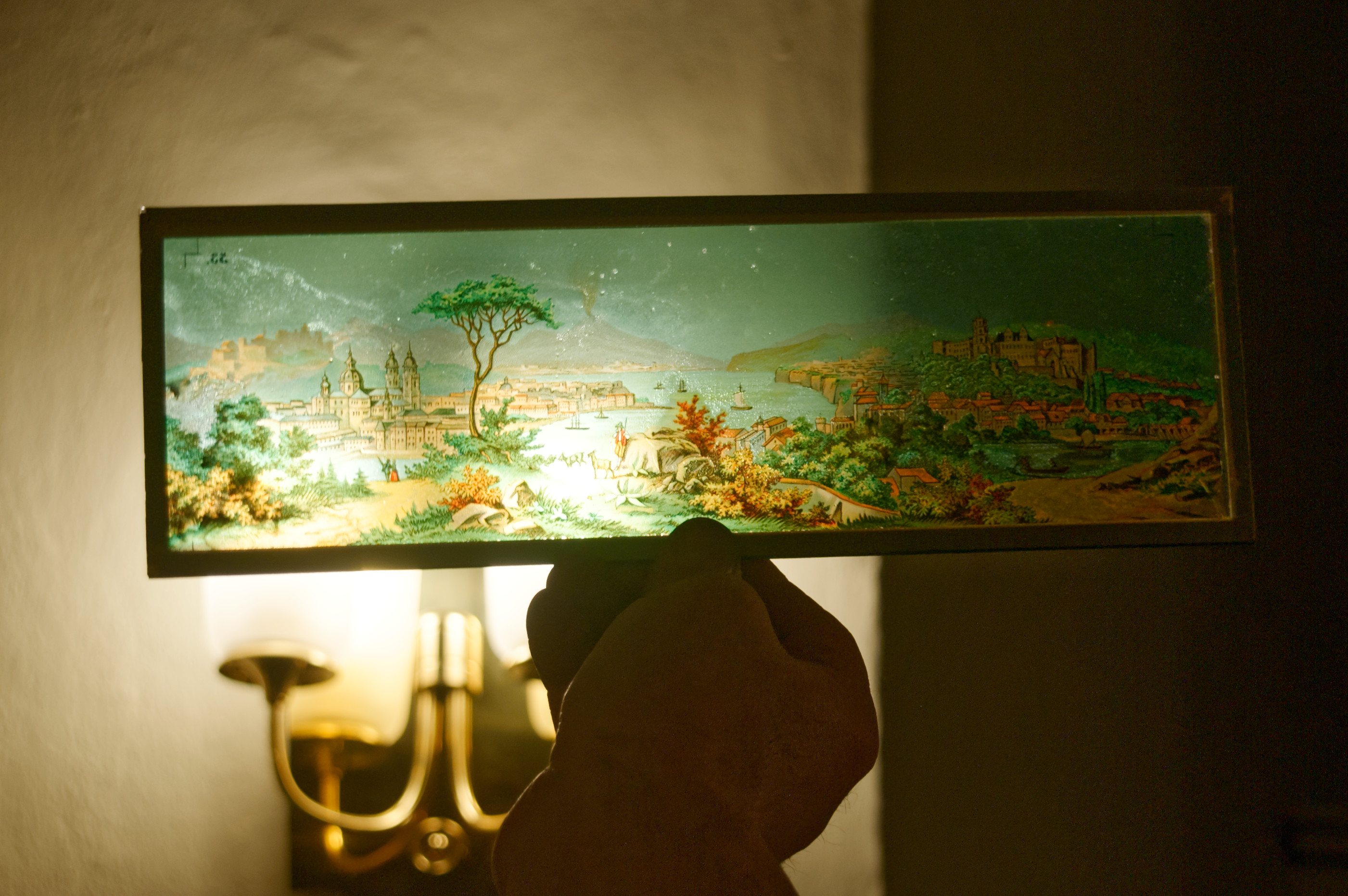
An exemplary magic lantern slide image.
Image source: Wikimedia Commons. Author: Petra Klawikowski. License: CC-BY-SA 3.0.
"Some one had had the happy idea of giving me, to distract me on evenings when I seemed abnormally wretched, a magic lantern, which used to be set on top of my lamp while we waited for dinner-time to come ... "

Carlo Lasinio (1759-1838), after Benozzo Gozzoli (1420-1497), The Sacrifice of Abraham (ca. 1812).
Image source: Harvard Art Museum. Public domain in the USA (pre-1923).
" ... standing like Abraham in the engraving after Benozzo Gozzoli which M. Swann had given me, telling Sarah that she must tear herself away from Isaac."
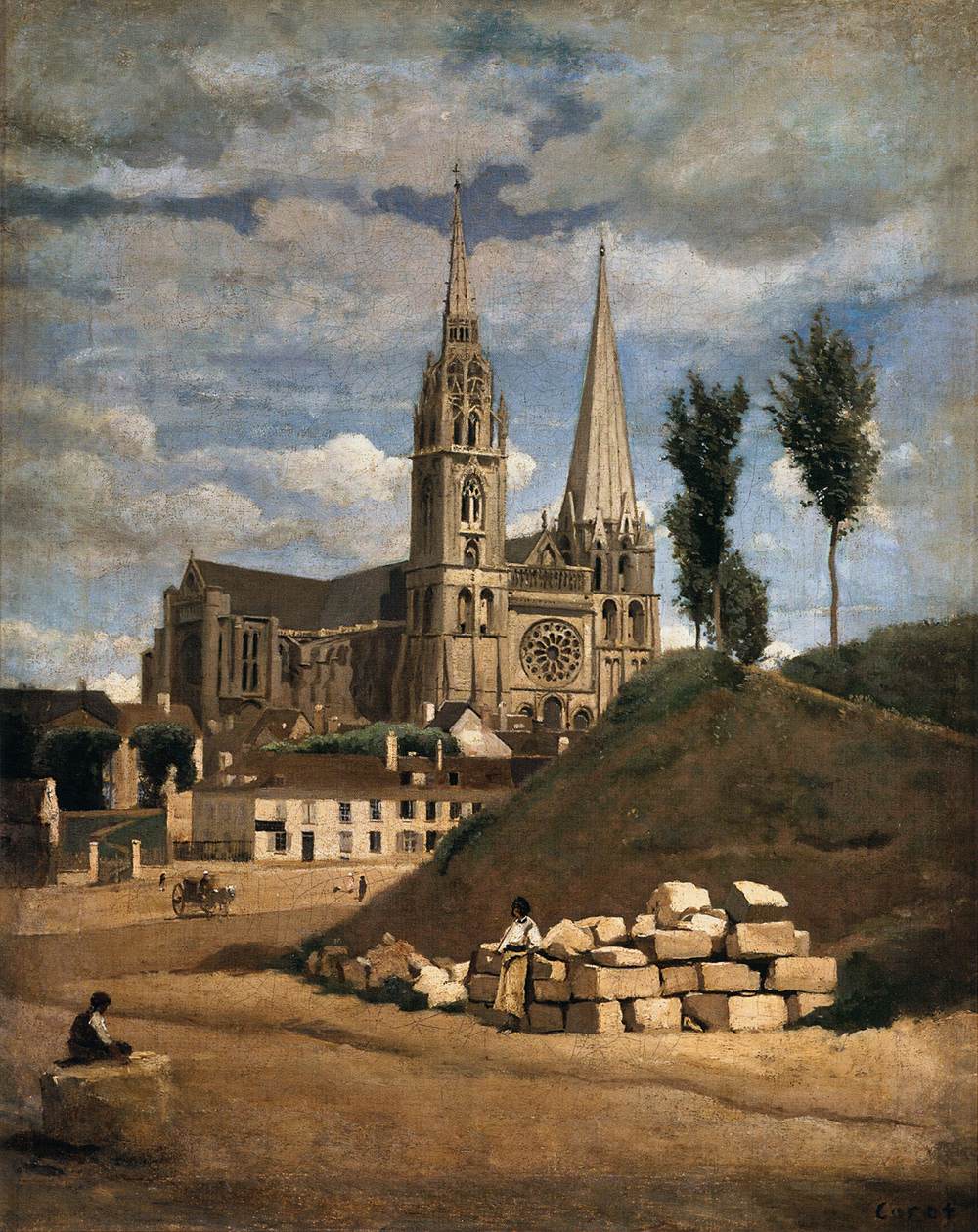
Jean-Baptiste-Camille Corot (1796-1875), The Cathedral of Chartres (1830).
Image source: Wikimedia Commons. Public domain in the USA (pre-1923).
" ... she would inquire of Swann whether some great painter had not made pictures of them, and preferred to give me photographs of ‘Chartres Cathedral’ after Corot, of the ‘Fountains of Saint-Cloud’ after Hubert Robert, and of ‘Vesuvius’ after Turner, which were a stage higher in the scale of art."
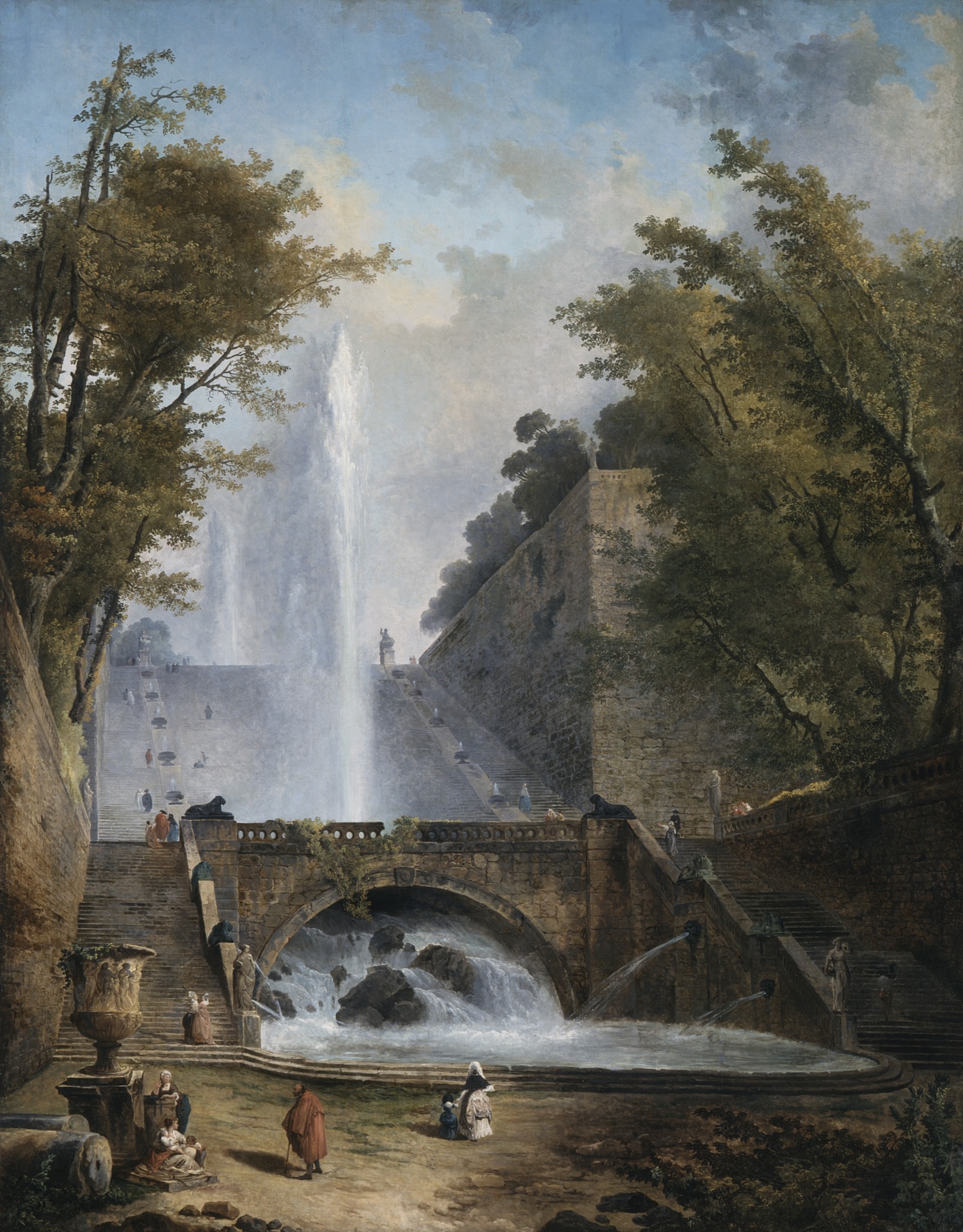
Hubert Robert (1733-1808), Stair and Fountain in the Park of a Roman Villa (ca. 1770).
Image source: Wikimedia Commons. Public domain in the USA (pre-1923).
" ... she would inquire of Swann whether some great painter had not made pictures of them, and preferred to give me photographs of ‘Chartres Cathedral’ after Corot, of the ‘Fountains of Saint-Cloud’ after Hubert Robert, and of ‘Vesuvius’ after Turner, which were a stage higher in the scale of art."
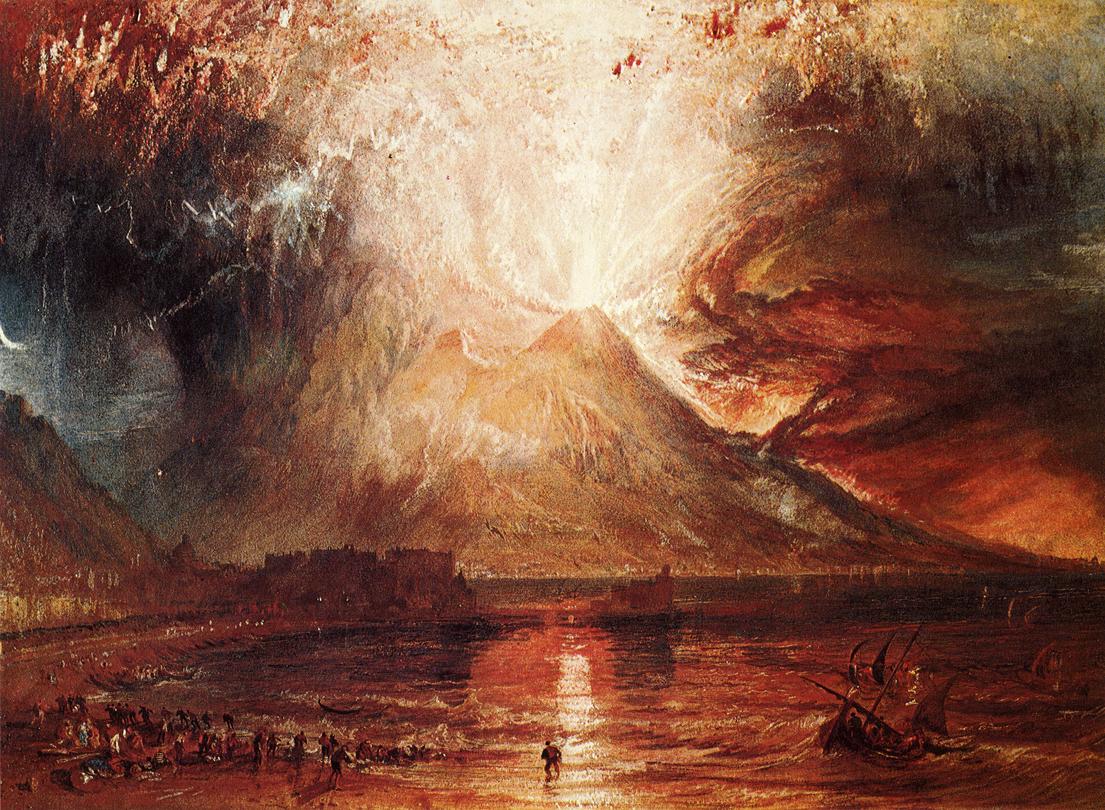
J.M.W. Turner (1775-1851), Mount Vesuvius in Eruption (1817).
Image source: Wikiart.org. Public domain in the USA (pre-1923).
" ... she would inquire of Swann whether some great painter had not made pictures of them, and preferred to give me photographs of ‘Chartres Cathedral’ after Corot, of the ‘Fountains of Saint-Cloud’ after Hubert Robert, and of ‘Vesuvius’ after Turner, which were a stage higher in the scale of art."

Raphael Morghen (1758-1833) after Leonardo da Vinci (1452-1519), The Last Supper (1800).
Image source: The Metropolitan Museum of Art. Public domain in the USA (pre-1923).
" ... a masterpiece in a state in which we can no longer see it to-day, as Morghen’s print of the ‘Cenacolo’ of Leonardo before it was spoiled by restoration."

Unknown Flemish artist, Esther and Ahasuerus, wool and silk tapestry (ca. 1460-1485).
Image source: Minneapolis Institute of Art. Public domain in the USA (pre-1923).
"Two tapestries of high warp represented the coronation of Esther ... "

Giovanni Battista Piranesi (1720-1778), Arch of Septimius Severus (from Roman Antiquities, 1756).
Image source: Wikiart.org. Public domain in the USA (pre-1923).
" ... which is, in fact, nothing else than the dome of Saint-Augustin, and which imparts to this view of Paris the character of some of the Piranesi views of Rome."

Giotto (1266-1377), Charity (1304-1306).
Image source: Wikiart.org. Public domain in the USA (pre-1923).
"These last recalled the cloaks in which Giotto shrouds some of the allegorical figures in his paintings, of which M. Swann had given me photographs. He it was who pointed out the resemblance, and when he inquired after the kitchen-maid he would say: 'Well, how goes it with Giotto’s Charity?'"
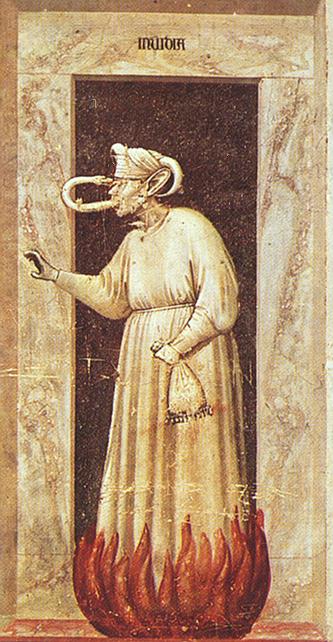
Giotto (1266-1377), Envy (1304-1306).
Image source: Wikiart.org. Public domain in the USA (pre-1923).
"The ‘Invidia,’ again, should have had some look on her face of envy."

Giotto (1266-1377), Justice (1304-1306).
Image source: Wikiart.org. Public domain in the USA (pre-1923).
" ... a Justice whose greyish and meanly regular features were the very same as those which adorned the faces of certain good and pious and slightly withered ladies of Combray whom I used to see at mass, many of whom had long been enrolled in the reserve forces of Injustice."

Giovanni Bellini (1430-1516), The Sultan Mehmet II (1480).
Image source: Wikimedia Commons. Public domain in the USA (pre-1923).
"'Oh, yes, that boy I saw here once, who looks so like the Bellini portrait of Mahomet II. It’s an astonishing likeness; he has the same arched eyebrows and hooked nose and prominent cheekbones. When his beard comes he’ll be Mahomet himself. ... '"

Cathédrale Notre-Dame de Chartres, sculptures on the right jamb of central bay and left jamb of the right bay, western ("Royal") portal, 12th century.
Image source: Wikimedia Commons. Author: Andreas F. Borchert. License: CC-BY-AS 4.0 International et al.
"'Her acting will give you as noble an inspiration as any masterpiece of art in the world, as — oh, I don’t know — ' and he began to laugh, 'shall we say the Queens of Chartres?'"

Cathédrale Notre-Dame de Chartres, north rose window.
Image source: Wikimedia Commons. Author: Guillaume Piolle. Public domain.
"' ... the church there has superb windows, almost all quite modern, including that most imposing ‘Entry of Louis-Philippe into Combray’ ... which is every bit as good, I understand, as the famous windows at Chartres. ... '"

Cathédrale Notre-Dame de Chartres, section of the window known as Notre Dame de la Belle Verrière depicting the Marriage at Cana.
Image source: Wikimedia Commons. Public domain.
"' ... the church there has superb windows, almost all quite modern, including that most imposing ‘Entry of Louis-Philippe into Combray’ ... which is every bit as good, I understand, as the famous windows at Chartres. ... '"
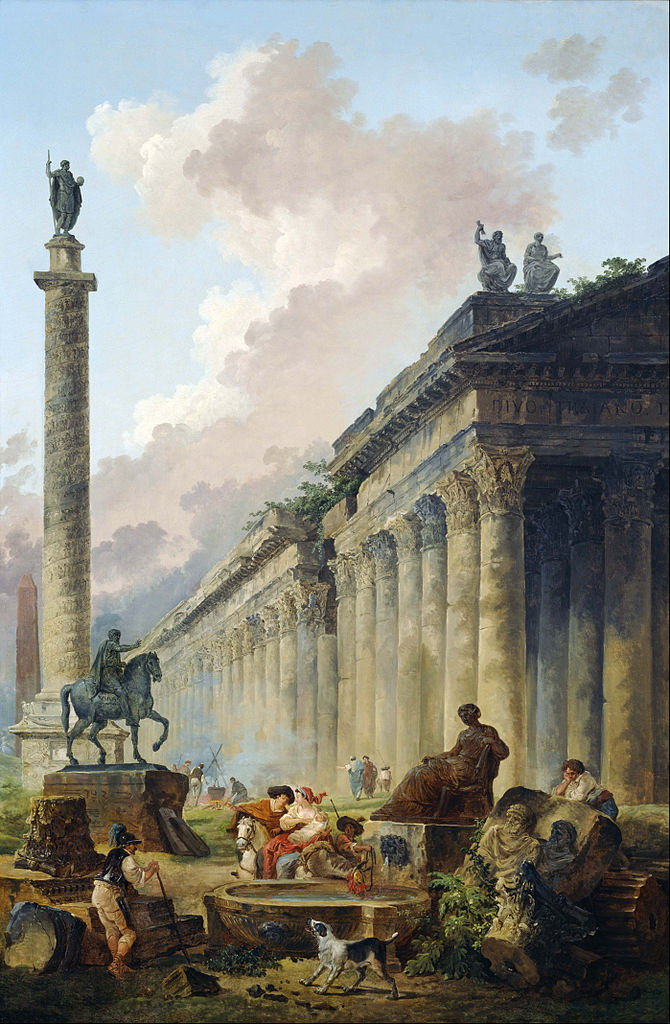
Hubert Robert (1733-1808), Imaginary View of Rome with Equestrian Statue of Marcus Aurelius, the Column of Trajan, and a Temple (1786).
Image source: Wikiart.org. Public domain in the USA (pre-1923).
"In each of their gardens the moonlight, copying the art of Hubert Robert, had scattered its broken staircases of white marble, its fountains of water and gates temptingly ajar."

Edouard Manet (1832-1883), Bunch of Asparagus (1880).
Image source: Wikimedia Commons. Public domain in the USA (pre-1923).
" ... but what fascinated me would be the asparagus, tinged with ultramarine and rosy pink which ran from their heads, finely stippled in mauve and azure, through a series of imperceptible changes to their white feet ... "
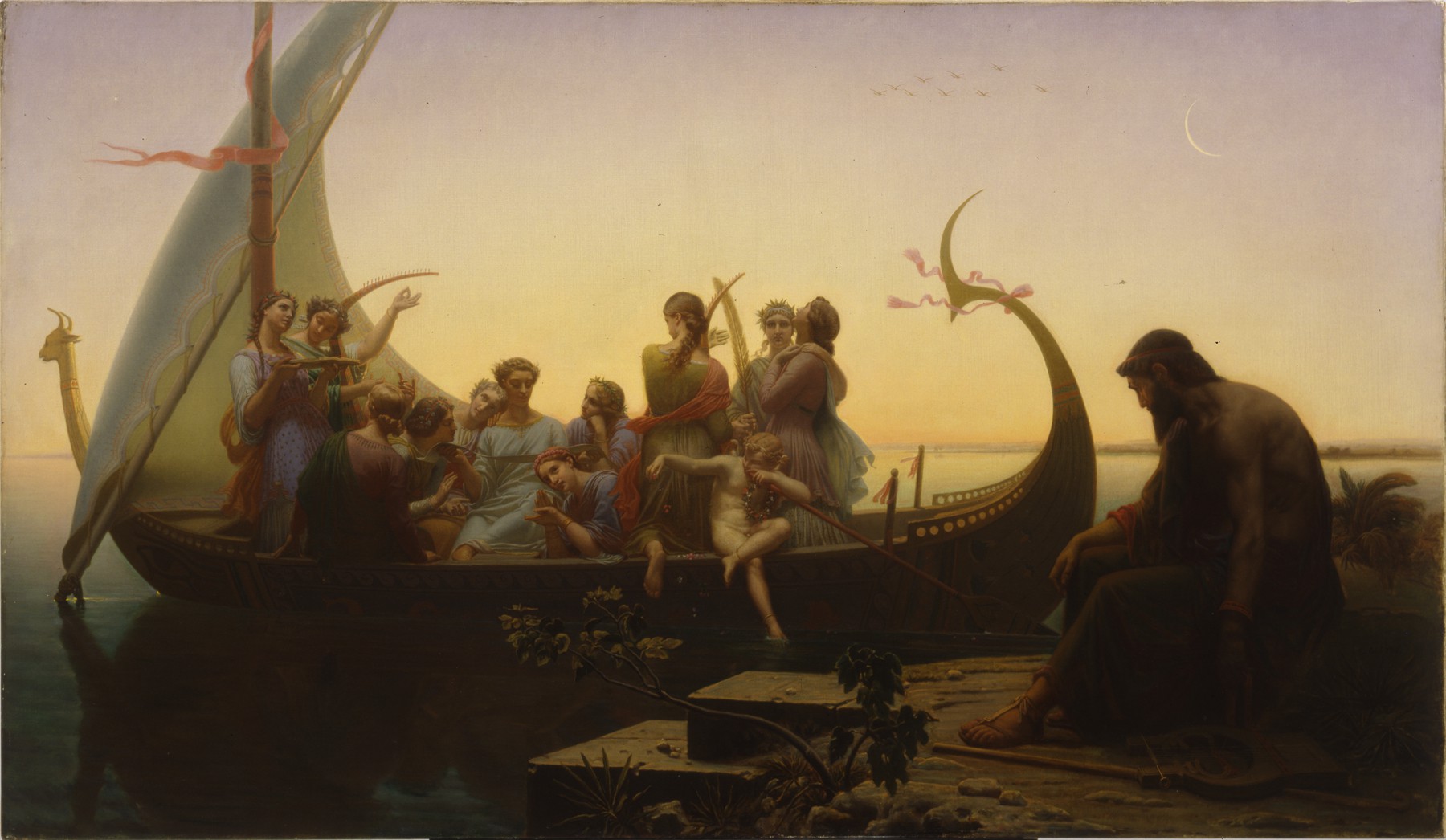
Charles Gleyre (1806-1874), Lost Illusions (Le Soir) (1843).
Image source: Wikimedia Commons. Public domain in the USA (pre-1923).
"It might be, for instance, some novel by Saintine, some landscape by Gleyre, in which [the moon] is cut out sharply against the sky, in the form of a silver sickle ... "

Giovanni Bellini (1429-1507), Procession in the Piazza San Marco (1496).
Image source: Wikimedia Commons. Public domain in the USA (pre-1923).
" ... as moving ... as those old engravings of the ‘Cenacolo,’ or that painting by Gentile Bellini, in which one sees, in a state in which they no longer exist, the masterpiece of Leonardo and the portico of Saint Mark’s."
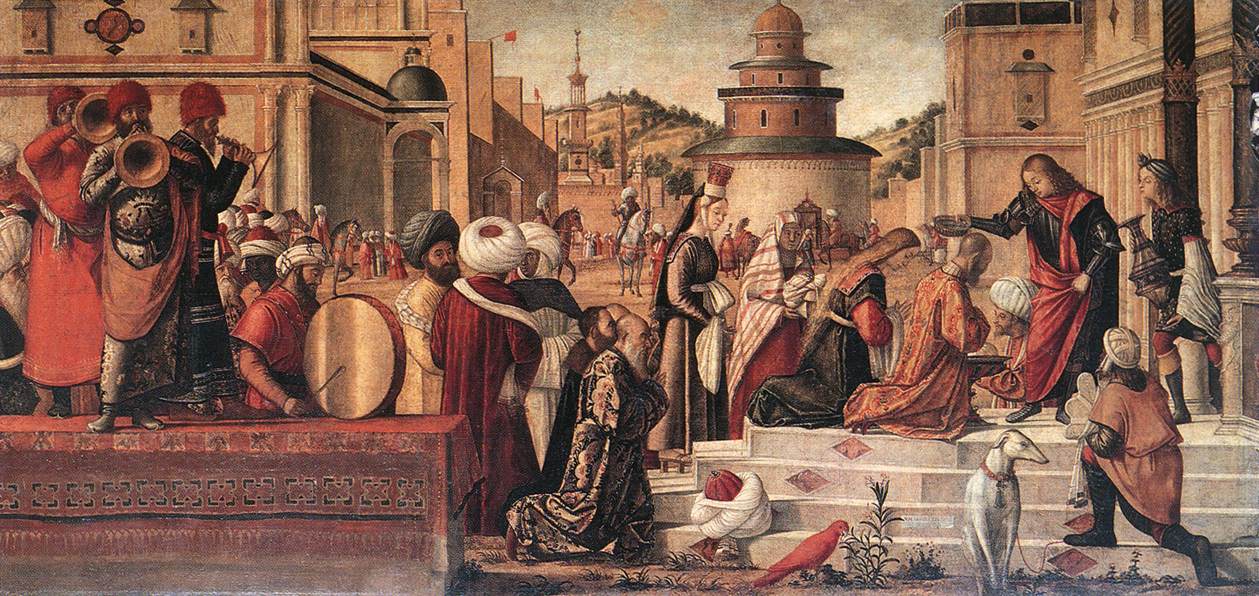
Vittore Carpaccio (ca. 1465-ca.1525), St. George Baptizing the Selenites (1507).
Image source: Wikimedia Commons. Public domain in the USA (pre-1923).
" ... that sort of tenderness, of solemn sweetness in the pomp of a joyful celebration, which characterises certain pages of Lohengrin, certain paintings by Carpaccio ... "